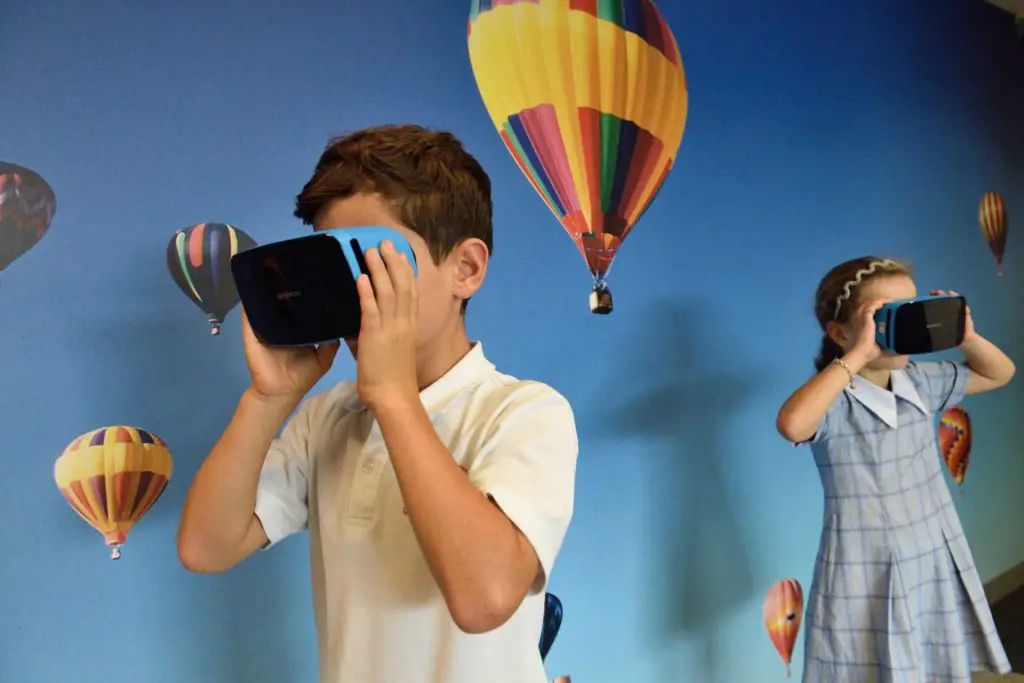Oculus, HTC, and Sony are three companies dominating the VR markets. VR is a niche product but very popular among its users. However, all the VR devices come with the same safety warning “Children aged 12 or younger should not use this VR device.“
For example, according to PlayStation VR (PSVR) instruction manual1, PlayStation VR is not for use by children under the age of 12. According to the Oculus Quest user manual2, children under 13 should not use the Oculus Quest.
So, Why is VR not for children under 12 or 13 years old? It’s because the side effects of VR on children’s vision is still unknown, and manufacturers don’t want any future litigation. Moreover, we know that VR causes eye strain, nausea, and headache. Side effects like these are more severe on children than adults.
Let us elaborate.
Virtual Reality Sickness:
A VR device may cause the following types of sickness — seizures, convulsion, dizziness, eye muscle cramps, eye strain, altered vision, loss of awareness, disorientation, motion sickness, headache, nausea. These are called VR induced sickness.
Though these effects vary wildly between adults, a VR can induce more eye strain and headaches in children. However, many parents claim that their child can use VR without any visible side effects. That could be true. But we don’t know the long term effects of VR on a child’s vision.
Physical and Mental Harm:
Children do not follow safety instructions as adults do. Small children can entangle themselves with VR cables, may try to walk or run wearing the VR headset. It could lead to an accident.
Some VR, such as PSVR, completely blocks your ability to see your surroundings, and it does not detect obstacles. It’s not uncommon for adults to bump into things while wearing a VR headset. We have seen adults fall and get frightened by VR experience. If not supervised correctly, VR has the potential to scare a kid too. For some children, it could lead to life prolonged trauma.
Eye Strain:
We use a smartphone daily. Have you ever noticed that your eye hurts if you use your smartphone in the dark, for example, in bed before sleep?
It’s not uncommon for adults that their eye hurts after using VR devices for a short period. We also found that some adults can use VR for a long time without any issue. However, children’s eye is different. Their eyes are more sensitive.
The display on the VR sits 2 inches away from the eye. So, children will quickly develop eye strain. They may not complain immediately that their eye hurts as the VR experience will blow them away. But repeated exposure may lead to complications.
Not made for children:
Both Sony and Oculus say that their VR devices are not for children. It is due to their VR headset is not appropriately sized for children. Children’s interpupillary distance (IPD) is different from adults. According to the University of Cambridge Computer Laboratory3, an adult’s average IPD is 63mm, whereas children’s average IPD is 40mm.
Unfocused and poorly fit VR causes eye strain. A VR device designed for an adult will cause nausea in children due to this IPD mismatch. It’s why manufacturers warn against VR use by 13 years or younger children. Furthermore, they also say that children over 13 should only be allowed to use this headset if an adult is supervising.
Developing Eyes:
Nobody knows the long term effects of VR on eyesight. Eyes are continually developing throughout childhood, and strain can happen more in younger developing bodies than full-grown adults.
Fear of Litigation:
No extensive research has been done on the side effects of VR on children. Virtual Reality headset manufacturers still don’t know whether VR devices could damage a child’s eye or hinder mental development. If a future study finds that VR negatively affects a child’s vision, a class action lawsuit against VR device manufacturers will not be surprising. Therefore these companies want to play it safe. It is another reason why VR device manufacturers warn customers against giving a virtual reality device to underage children.
What Parents Say:
There are numerous cases4 where parents allow their children under 12 to use a VR device. According to these parents, they allow their children to use VR for 5-10 minutes, and it does not cause any problem.
What does the expert say?
An article published on the American Academy of Ophthalmology5 says that “Although there are no long-term studies, ophthalmologists agree there is no reason to be concerned that VR headsets will damage eye development, health or function.“
Stanford University conducted some research in 2009 and 2017 6. According to those researchers, children tend to confuse VR experience with real-world experience. Though Stanford researchers don’t contend with what ophthalmologists say, these researchers are worried about VR’s side effects on a child’s mental health development.
Conclusion:
The adverse effects of VR on children are unknown. So, once in a while, we allow our children to use VR for only 5 to 10 minutes while monitoring their activities. However, if you are worried, it’s better not to allow them to use a VR device. It’s better to be safe than sorry.
